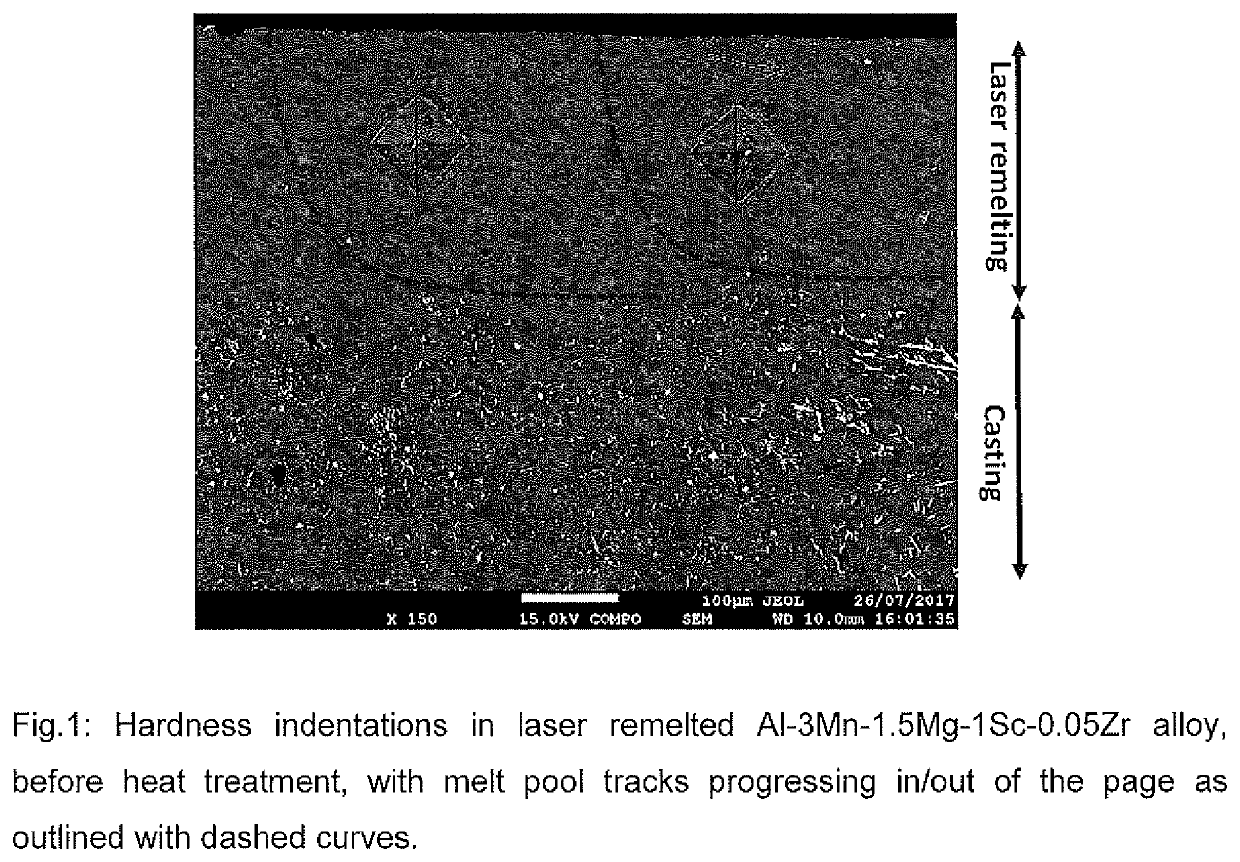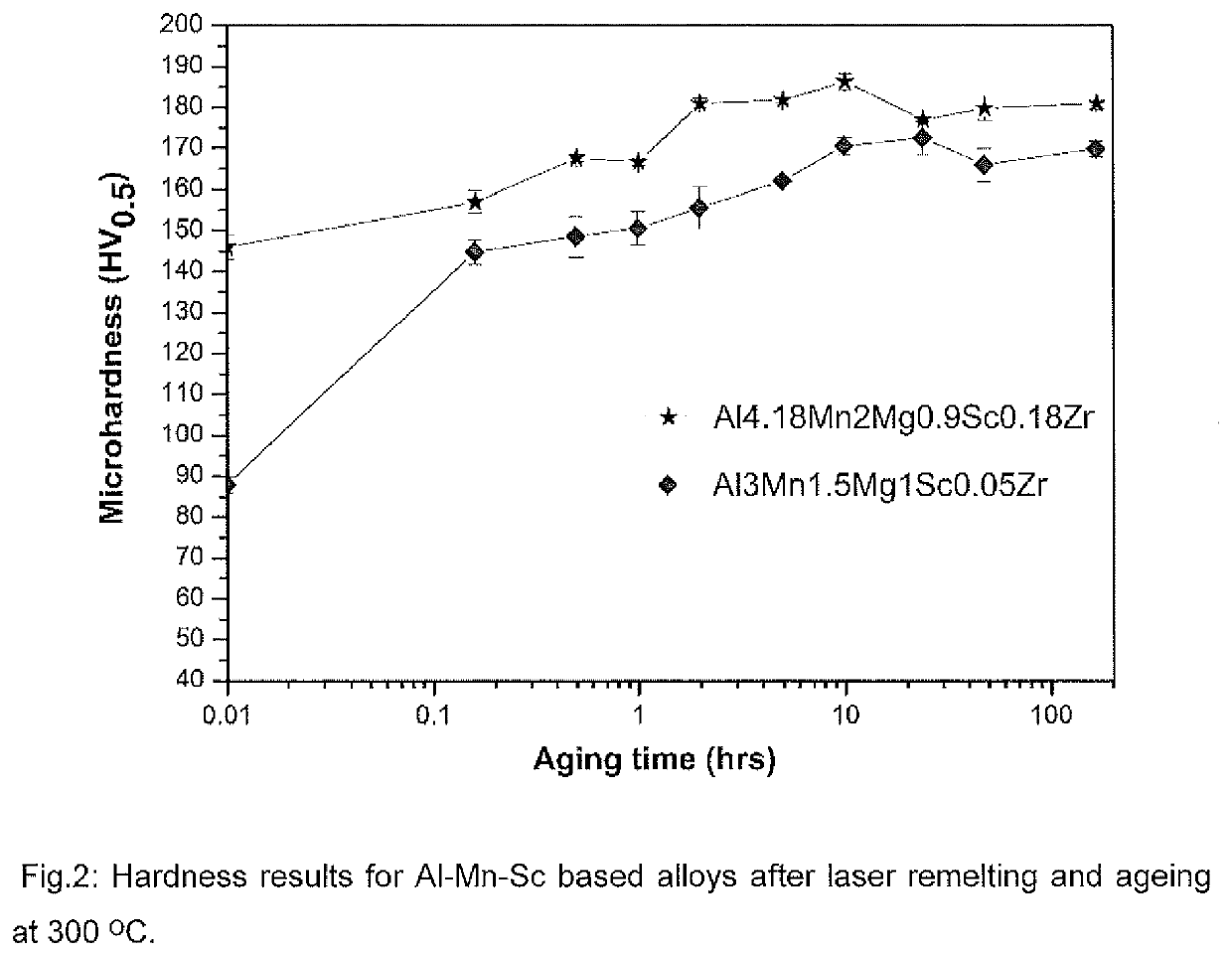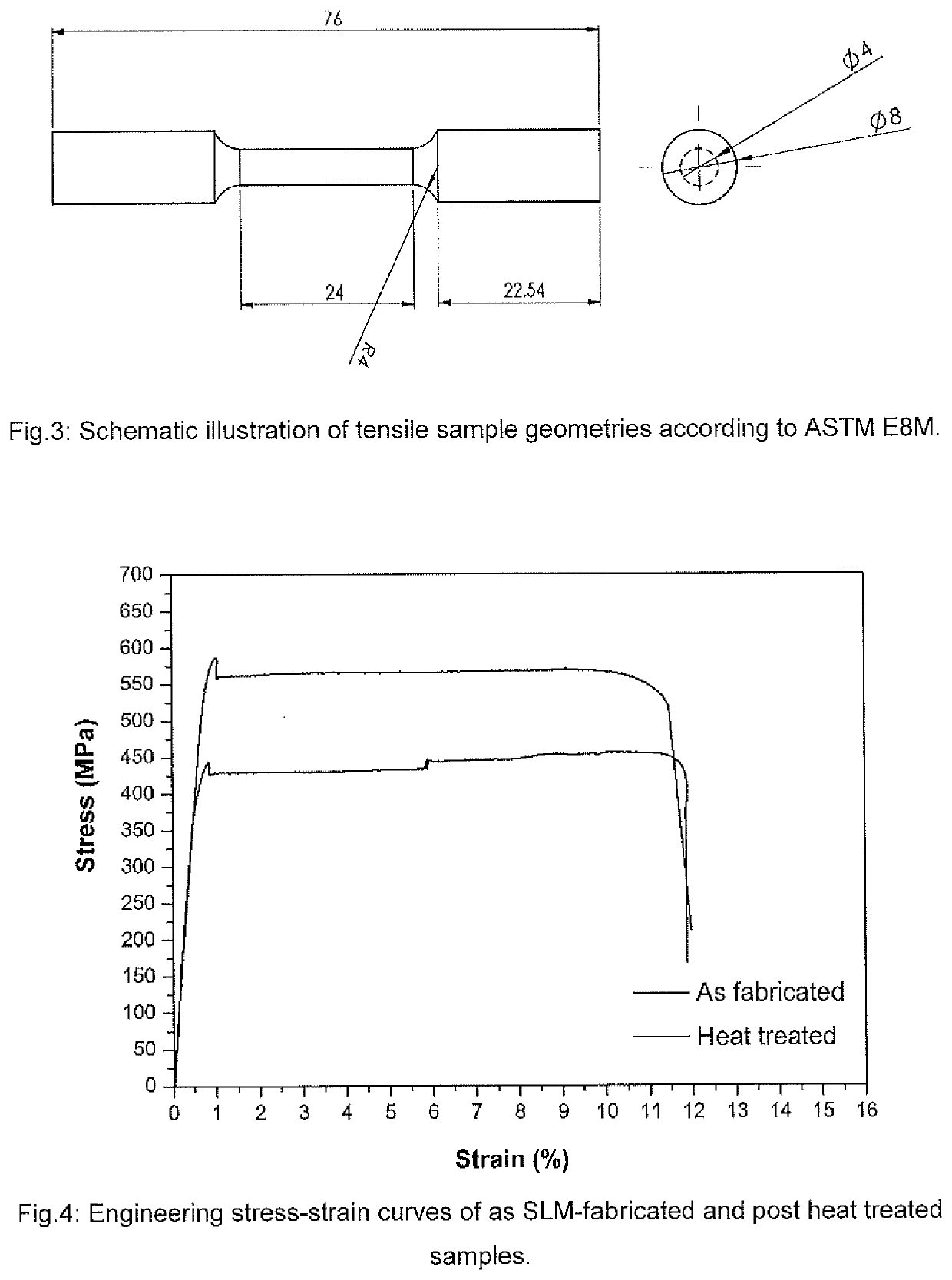High strength aluminium alloy for rapid solidification manufacturing processes
a manufacturing process and high-performance technology, applied in the field can solve the problems of inability to meet the requirements of current industry design and application demands, limited selection of high-performance aluminium alloys suited for am processes, and ineffective release of properties, so as to improve the mechanical properties of components, reduce the effect of water quench cooling
- Summary
- Abstract
- Description
- Claims
- Application Information
AI Technical Summary
Benefits of technology
Problems solved by technology
Method used
Image
Examples
example 1
[0020]The production of components of Al—Mn—Sc based alloys according to the present invention, by AM processing, was simulated using two alloy compositions. The first Al—Mn—Sc based alloy had a composition of Al-4.18Mn-2Mg-0.9Sc-0.18Zr (wt %), while that for the second alloy had a composition of Al-3Mn-1.5Mg-1Sc-0.05Zr (wt %). These alloys were produced by melting master alloys of the compositions Al-60Mn, Al-50Mg, Al-2Sc and Al-10Zr (all wt %) in a resistively heated furnace at 800° C., casting the successive melts and cooling the castings at a solidification cooling rate of approximately of 103 K / s. The cast alloys were cut into 5 mm thick samples and the samples were then ground, using abrasive paper to maintain the same surface roughness.
[0021]The samples so produced were placed onto the substrate of a commercial EOSINT M280 SLM machine for laser scanning. A total of 30 laser scans were conducted on the ground sample surface to generate parallel adjacent melt pools without adde...
example 2
[0022]Prism type samples were produced by SLM fabrication, from gas atomised powder with a wt % composition of Al-4.52Mn-1.32Mg-0.79Sc 0.74Zr. The samples were produced on an EOSINT M290 commercial SLM machine, with a laser power of 370 W, scanning speed of 1000 mm / s, hatch distance of 0.1 mm and layer thickness of 30 μm. The samples were built on a 6061 aluminium alloy substrate from which they were removed by electric discharge machining (EDM) cutting. Some of the samples were heat treated in a salt bath at 300±2° C. for 5 hrs and all samples, with and without heat treatment, were then machined into tensile samples of the geometry shown in FIG. 3, according ASTM E8M. Tensile tests were conducted using a 100 kN Instron 5500R / 4505 screw driven machine at a constant cross head moving speed of 0.48 mm / min. Resultant tensile engineering stress / strain curves are shown in FIG. 4, while other determined characteristics were:
1) Tensile properties of non-heat treated, as SLM fabricated samp...
PUM
| Property | Measurement | Unit |
|---|---|---|
| Temperature | aaaaa | aaaaa |
| Temperature | aaaaa | aaaaa |
| Time | aaaaa | aaaaa |
Abstract
Description
Claims
Application Information
 Login to View More
Login to View More - R&D
- Intellectual Property
- Life Sciences
- Materials
- Tech Scout
- Unparalleled Data Quality
- Higher Quality Content
- 60% Fewer Hallucinations
Browse by: Latest US Patents, China's latest patents, Technical Efficacy Thesaurus, Application Domain, Technology Topic, Popular Technical Reports.
© 2025 PatSnap. All rights reserved.Legal|Privacy policy|Modern Slavery Act Transparency Statement|Sitemap|About US| Contact US: help@patsnap.com



